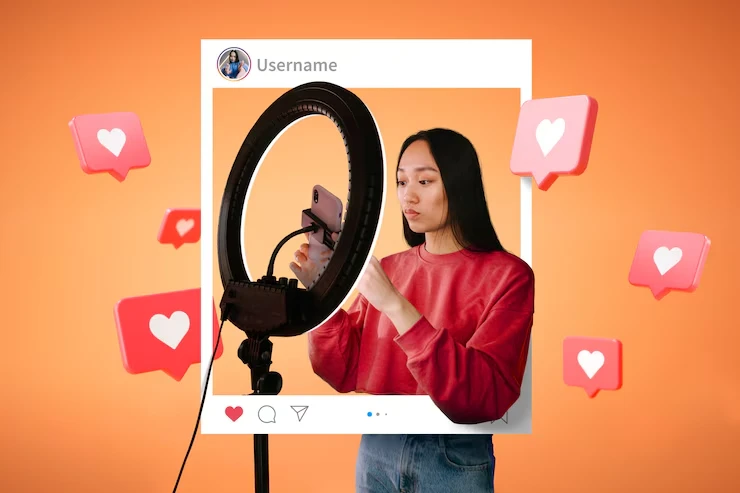Today, many brands work with people called influencers to tell others about their products. This helps them get more people to notice, trust, and buy what they’re selling. In 2025, brands have a big question – Should they work with macro influencers (lots of followers) or micro influencer (fewer followers)?
Both big and small influencers are good, but in different ways. The best one to pick depends on what the brand wants, how much money they have, and who they want to reach. In this blog, you will read about what big and small influencers do, what’s new in 2025, and how brands can choose the right one for them.
Difference Between Type of Influencers: Micro & Macro

There are two type of influencers. Before we compare them, let’s first understand who they are:
- Micro-influencers: Micro-influencers are also known as nano-influencers. They have between 10,000 and 100,000 followers. They usually talk about one special topic, like fitness, parenting, food, fashion, or tech. Their followers trust them a lot and feel like they know them well.
- Macro-influencers have more than 100,000 followers—some even have millions! They are often famous people, like celebrities or big content creators. Lots of different people follow them because they talk about many topics.
Now let’s see how each type does in different important areas.
Engagement: Who Connects More with Their Followers?
✅ Micro Influencer: High Engagement
Micro-influencers usually have engagement rates between 7% and 20%, which is very impressive. Because they talk directly to a smaller group, their followers are more likely to comment, like, and trust their opinions. People see them as more relatable and real.
For example, a food blogger with 30,000 followers might get hundreds of comments from people asking about recipes or sharing their own tips. That personal touch makes a big difference.
📉 Macro-Influencers: Broad Reach, Lower Engagement
Macro-influencers or often have lower engagement rates—around 3% to 6%. This is normal because the larger the audience, the harder it is to keep everyone equally engaged.
However, because they reach so many people, even a small percentage can still mean thousands of interactions per post. They’re especially good for getting a message in front of a lot of people quickly.
Cost and Budget for Influencers Marketing

Micro-Influencers: Budget-Friendly
Working with micro-influencers is generally more affordable. They charge lower fees, and you can often work with several micro-influencers for the same price as one macro-influencer.
This is great for:
- Small or medium-sized businesses
- Local campaigns
- Testing different types of content or markets
Plus, their followers often trust them more, which can lead to higher conversion rates (more people buying or signing up after seeing the post).
Macro-Influencers: Higher Cost, Bigger Exposure
Macro-influencers charge more for posts, stories, or videos. But they also give you access to a much wider audience.
They’re perfect for:
- Launching a new product
- Running a nationwide or global campaign
- Boosting brand awareness quickly
So, while they may be expensive, they’re valuable when your goal is maximum reach.
Trust and Realness: Who Feels More Like a Friend?
- Micro-Influencers: Feel Like Friends: Micro-influencers are like online friends who talk about things they truly like. They often reply to comments, share real stories, and speak honestly. Because of this, people trust them more. When they talk about a product, it feels like a friend giving advice—not like a commercial.
- Macro-Influencers: More Famous, Less Personal: Macro-influencers are very popular and often work with big companies. Their posts look fancy and professional. But sometimes, it feels like they’re just doing it for money, not because they really use the product.
So, if you want someone who feels real and easy to trust, micro-influencers are usually better.
Which One Works Better for Your Money?
Micro Influencer: Great for Small, Special Groups
Micro-influencers are really good if you want to reach a small group of people who care a lot about one topic. They are great for:
- Talking to local people
- Making a close group of fans
- Getting more people to buy something by telling friends
Example: A face cream for girls with sensitive skin might do better if 5 small skincare influencers talk about it, instead of 1 big famous person who talks about lots of things.
Macro Influencers: Great for Reaching Lots of People
If you want lots of people to see your brand or product, macro-influencers are the best. They help more people learn your name. They are great for:
- New product launches
- Big brand changes
- Country-wide ads or events
To sum it up:
Micro-influencers = Better for talking closely and getting people to buy.
Macro-influencers = Better for showing your brand to many people.
Influencer Marketing Trends in 2025

The influencer marketing world keeps changing. Here’s what’s happening this year:
1. 🔀 Brands Are Using Both Types
Instead of choosing one or the other, many brands now run hybrid campaigns. For example:
- One macro-influencer introduces a product to a wide audience.
- Several micro-influencers create in-depth content to build trust and drive sales.
This mix helps brands get both reach and engagement.
2. 📊 Data-Driven Campaigns Are Key
In 2025, brands rely heavily on analytics and real-time insights. They track:
- How many people saw the content
- How many clicked or bought something
- Which influencers had the best results
Influencer marketing campaigns help companies improve quickly and work only with the best-performing influencers.
3. 🤖 AI Is Shaping Campaigns
AI tools are helping brands:
- Match with the right influencers
- Write better posts
- Predict results before a campaign starts
It saves time, money, and helps create smarter marketing.
4. 📱 New Platforms Are Emerging
While Instagram, YouTube, and TikTok are still strong, newer platforms are gaining attention. These include:
- Threads
- BeReal
- Niche community apps
Influencers are growing in many places, giving brands more options.
How to Find Influencer for Your Brand
You can find influencer by following some tips. Here are a few simple steps to decide:
- Define Your Goal: Do you want to sell a product? Build trust? Reach new people?
- Know Your Budget: Micro-influencers are affordable and effective. Macro-influencers cost more but offer big exposure.
- Understand Your Audience: Pick influencers who speak to your target group (age, interests, location).
- Look at Past Results: Check engagement rates and past campaigns. Don’t just look at follower numbers—look at real impact.
- Try a Mix: If your budget allows, try both types to see what works best.
Conclusion
In 2025, both micro and macro influencers are powerful tools for brands. The best choice depends on what you want to achieve.
- Choose micro-influencers if you want to build trust, target a specific group, or keep your costs low.
- Choose macro-influencers if your goal is to reach a lot of people quickly and professionally.
Or even better—use both in a smart, balanced strategy.
With the help of AI tools, strong data, and clear goals, your influencer marketing campaign in 2025 can deliver amazing results.

